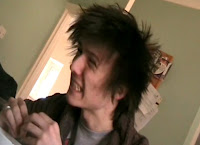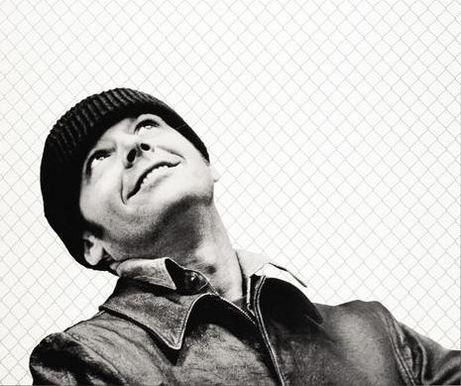In what ways does your media product use, develop or challenge forms and conventions of real media products?
One thing we forgot to mention on the video was the intertextual references and how they are a common feature of films of this genre, such as the recurring "Loomis" name in Psycho, Halloween and Scream. As previously mentioned our film has plenty of references to classics such as "Grace" (a tribute to star Grace Kelly), the name Paul Bateson (formed by mixing Paul Allen, Patrick Bateman, and Norman Bates), the line "Hey Paul..." (from American Psycho), and the Silence Of The Lambs book on the table.
How does you media product represent particular social groups?
What media institution might distribute your media product and why?
Psychological thrillers (in general) do not perform hugely well at cinema level these days. The most recent successful Psycho-Thriller was Martin Scorsese's Shutter Island which made £2,250,178 on it's opening weekend and £10,599,763 overall in the UK. In comparison similar release date Tim Burton's Alice In Wonderland made £10,555,220 in it's opening weekend and £42,169,542 overall.
So whilst bearing this in mind and added to the fact that the cast and crew are unknown, our film lacks wide audience appeal. This means that distribution would have to come from a company more interested in the art of film than making money. Warp X (a small UK production company) use Optimum Releasing for their distribution, and as they make slightly more controversial films, this would be considered if we had created this text in the real world. As Warp have tie-ins with Film 4, this does mean that a possible straight-to-tv film is also something to be considered. The actual cost of distribution is huge compared to the box office takings for small independent films so many, such as Bunny And The Bull, only have one tape which must travel from cinema to cinema. Most low budget films are actually released straight onto DVD, but again this will need a distributor to get it into the shops, and also some level of promotion, as again demand is low.
In terms of our actual text, we are obviously using Youtube to exhibit our film opening. This is probably the best way for young film makers to get their film seen, but again for success a reputation needs to be built up around the film.
We have submitted our film to be entered into the Co-op Young People's Film Festival. We have had to make changes for this, such as editing out the swearing to make it more suitable for any younger audiences at the screening. This is similar to how sometimes TV programmes, for example Friends, are edited by Ofcom so they are eligible to be shown before the watershed.
So by choosing to make a film in the Psychological-Thriller genre we have effectively largely narrowed down our audience, and by doing so our chances of securing a distributor for cinematic release. Again, this is due to wanting to make a film with deep meaning and artistic style, rather than just making money.
Who would be the audience for your media product and why?
Our target audience for our media product would be aged 18 - 35 years. Any younger age would be technically excluded due to a notional BBFC rating, though with the use of downloads, pirate copies and owning DVDs at home, some younger ages may well be able to see an 18 rated film. Our film includes alot of serious themes; religion, violence, the mind, so again this narrows the audience down to those interested in really deeply watching a film rather than simply watching a Rom-Com for relaxation. It does not appeal to a huge audience, it's not intended, it like many films in the genre attempts to engage a sophisticated audience.
Like discussed in the previous question, Psychological thrillers do not have a history of huge commercial success. That being said Hitchcock classic Psycho originally has a budget of £300,000 and has now recouped a huge £30million. In a Daily Express article from earlier this year entitled "The moment the world went PSYCHO", Neil Norman writes how Psycho shocked but engaged audiences upto 40 years of age, "the enlightening cynicism of the younger generation". When done properly the psychological thriller genre can be a powerful device.
In terms of social class this artistic genre mainly appeals to the ABC1 grouping, with more sophisticated viewers the main target. The characters portrayed on screen do not have a lower class background although they are trying to climb the social ladder, so it does appeal more to a higher class than lower working class.
Both of our main two characters are caucasian actors, possibly meaning that it does not widely appeal to all audience as much as intended. But we found from our research that in general, most films of this style and genre did star caucasian actors, with any others forming lesser parts, which had we gone on to do a whole film may well have used. The lack of non-caucasian characters does not exclude different audiences though as many box office hits use a mainly white cast.
Our film is aimed at fans of the works of auteurs such as Stanley Kubrick, Darren Aronofsky, Alfred Hitchcock, David Fincher etc. Our audience will have an intelligence and creative side to them, taking links to the Literature side of film. The weird has a strange underlying tone to it, which will engange a more sophisiticated audience rather than alienate them. We have appealed to this audience with a common trait of the genre of using many intertextual references as previously stated. We have also instantly signified our target audience by the sophisticated name "A Bat In The Belfry", which only an intelligent audience would understand the meaning.
How did you attract/address your audience?
What have you learnt about technologies from the process of constructing this product?
We have developed many different skills over the course of the project, engaging in the main three stages of pre-production, production and post-production.
In terms of problems, our main two we could not fix were both in filming. We originally planned for once the production logos were onscreen to then have an eye opening effect into the blurred white room. Unfortunately we found this troublesome, with the intended effect not coming across. We tried to originally use card to essentially act as eyelids opening and closing, but in the end this look more like just cardboard. We then tried to use iMovie when editing for the effect but again, this looked unproffesional so we left it.
We also wanted to attempt the Hitchcock zoom first seen in Vertigo, but without the use of a camera dolly this made moving the tripod and camera smoothly very difficult.Unforunately we could not include this shot.
Looking back at yout preliminary task, what do you feel you have learnt in the progression from it to the full product?

The prelim task was roughly editing, as we had little previous experience with the programme, whereas now we spent more time editing our footage smoothly and realistically. Also with our film opening, we used different camera angles within the shot/reverse shot sequences to signify different feelings and meanings. For example the Dutch angle at the end connotes our central protagonist's madness, and that something is strange. We through in cutaway shots of the kettle to anchor emotions on screen and create tension with our audience. We were also not afraid to make use of the lack of dialogue in shot/reverse shot sequences, for example the awkward silence, which adds a sense of drama to our scene. This all came from trial and error with reshoots until we were happy with the finalised effect of each shot in the sequence. We were able to now convey many different feelings not only with dialogue, but the use of the visual art of film.



No comments:
Post a Comment